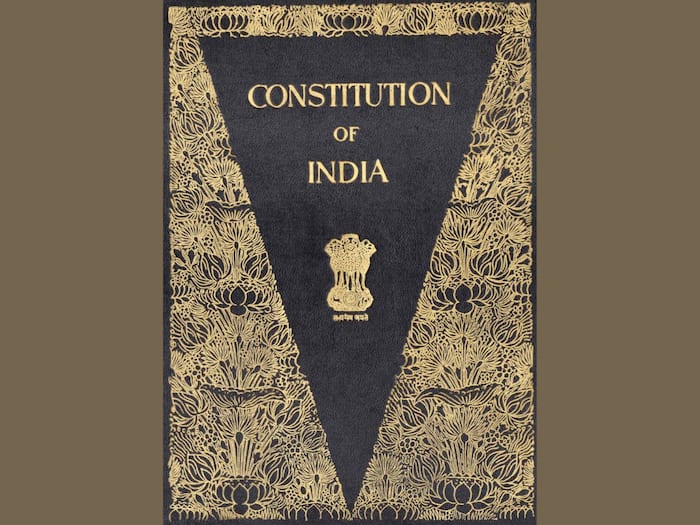On Republic Day 2024, take a look at the milestone amendments made to the Constitution of India in the past years..

New Delhi: India celebrates its 75th Republic Day today with grand celebrations including the Republic Day Parade at the Kartavya Path, New Delhi. It was on January 26, 1950 when the Constitution of India was formally adopted by the nation. Till date, the Constitution has remained relevant, stood the test of time and has laws to deal with all kinds of situations and emergencies, beautifully highlighting the distribution of powers in the country and upholding the principles of Sovereignty, Socialism, Secularism and Democracy. However, over the years, to keep the Constitution in sync with time, several changes, i.e. Amendments are made, the provisions of which are also mentioned in the Constitution. As India celebrates its ‘supreme law of the land’, the Constitution of India, which was written and then formally adopted more than seven decades ago, let us take a look at the milestone amendments made to the Constitution in these part years.
How Is An Amendment Made To The Constitution Of India?
As mentioned earlier, the process to make an amendment is defined in the Constitution itself. According to Article 368 of Part XX of the Constitution of India, an amendment can be made by the following processes –
- By a simple majority of the Parliament (Lok Sabha and Rajya Sabha). Admission/establishment of new states, formation of new states of alteration of boundaries or names of present states, quorum in Parliament, rules of procedure in Parliament, Citizenship acquisition and termination, salaries and allowances of Parliament members among others are an example.
- By a special majority of the Parliament, i.e. both Lok Sabha and Rajya Sabha. Fundamental Rights, Directive Principles of State Police and other provisions not covered in first and third categories can be amended by this process.
- By a special majority of the Parliament (Lok Sabha and Rajya Sabha) along with the ratification by at least half of the total number of states. The President’s election and its process, extent of executive power of Union and States, Supreme Court and High Courts, Distribution of legislative powers between Union and States and Power of Parliament to amend Constitution and its Procedure i.e. Article 368 itself are examples for this category.
Milestone Amendments In Constitution Of India
First Amendment Act, 1951
The first amendment to the Constitution was made in 1951 when the State was empowered to make special provisions for the advancement of socially and backward classes. The Ninth Schedule was added to the Constitution of India.
Second Amendment Act, 1952
According to the Second Amendment Act, 1952 the scale of representation in the Lok Sabha was readjusted with the explanation that one member can represent even more than 7.5 lakh people.
24th Amendment Act, 1971
The 24th Amendment Act, 1971 made the President’s assent to the Constitutional Amendment Bill was made compulsory.
42nd Amendment Act, 1976
The 42nd Amendment Act, 1976 is known as the ‘Mini Constitution’ because it brought multiple revisions to the Constitution. This amendment modified the Preamble, the Seventh Schedule and 40 clauses of the Constitution; it also added 14 additional articles. In the Preamble, ‘Sovereign Democratic Republic’ was replaced by ‘Sovereign, Socialist, Secular Democratic Republic’ and ‘unity of the nation’ was modified into ‘unity and integrity of the nation’.
In this Amendment Act, according to Articles 226A and 228A, HCs were permitted to rule on the legality of State Legislation; Article 131A was adopted, providing Supreme Court the authority to exclusively consider whether Central Legislation is legal or not; amendments were also made to Article 144A and Article 228A.
The 42nd Amendment Act, 1976 also added clauses to the Constitution, for suspension of the Fundamental Rights in times of need. 10 essential obligations were incorporated in the Constitution as Part IVA as Fundamental Duties for the citizens of the country. Revisions were also made to the Directive Principles of State Policy. Delimitation of Parliamentary seats and alteration in Article 74 were also made.
44th Amendment Act, 1978
The Amendment Act was made to revoke some amendments that were made under the 42nd Amendment Act, 1976. The modifications made include removal of Property Rights from the list of Fundamental Rights, Article 74(1) was revised stating that the President can ask the Council of Ministers to reconsider their advice. Article 368 was amended to ensure that if modification is made to the Constitution’s basic structure, it can only be enacted if the people of India agree to it. new principles to maintain social order for promotion of Welfare of the people were added to Article 38. Modifications were made related to Parliament and State Legislature and Judiciary. A new provision was added to put restraints on the power of Parliament; Articles 103 and 1932 replaced and safeguards in Article 352 have been introduced to prevent misuse of National Emergency power.

